- Home |
- Search Results |
- The stories behind the notebooks that documented Rob MacFarlane’s travels underground
The stories behind the notebooks that documented Rob MacFarlane’s travels underground
As Robert Macfarlane prepared to write Underland, he recorded everything in a series of notebooks. Battered, bruised and smudged, they accompanied the writer from the catacombs of Paris to Greenlandic glaciers, archiving the landscape.
People sometimes ask me why I don’t use a phone to take notes when I’m ‘out’ in the field. The answer is that phones smash, while notebooks bend. I also like the way that notebooks record where they’ve been not just in terms of what’s written in them, but also in terms of the wear they bear as objects.
Over the many years spent working on Underland, I’ve gathered more than twenty notebooks, more or less one for each journey. Each of the notebooks records a different landscape and descent: down to the starless rivers that run far below the limestone of north-west Italy, into the catacombs of Paris, down into the blue interiors of Greenlandic glaciers, or the sandstone rock-shelters of Bohemia, or a Dark Matter research laboratory in North Yorkshire, or a remote cave-art site on a wild Arctic coast, among other places.
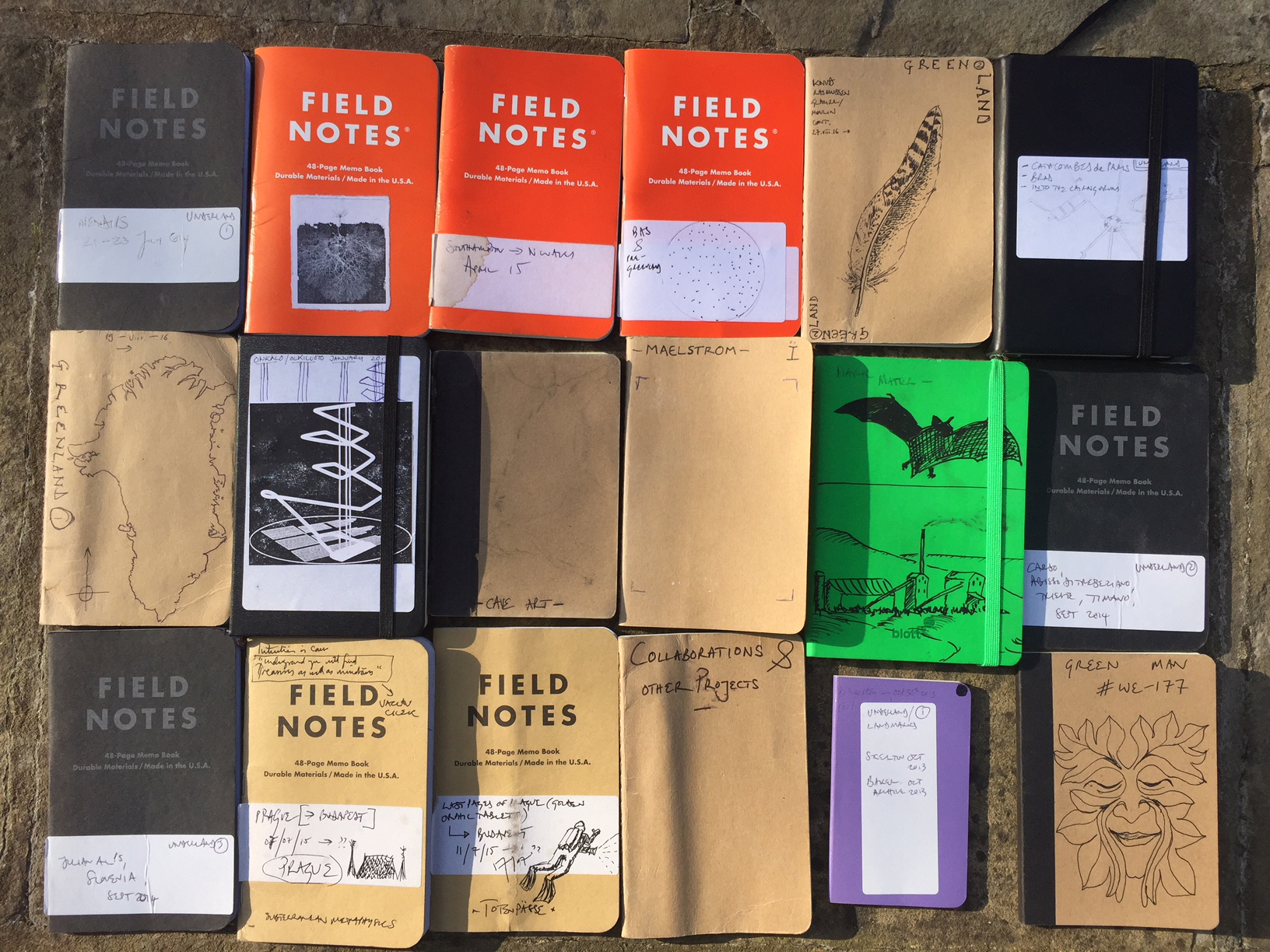
The notebooks vary from a tiny lilac-coloured Moleskine just seven or eight centimetres high, to robust hardback journals, tough enough to withstand being dragged through limestone tunnel systems and soaked in slate mines. I’ve doodled on the covers of some of them; the ink has faded from black to sepia on the oldest of the notebooks, where they’ve seen the most light.
There are places in these notebooks where my handwriting has been smudged into illegibility by underground streams, or where mud and silt stains the pages brown, or where the spines and corners have been foxed and folded. These are, to me, as much part of the archive of a landscape as my poor-quality biro sketches and my transcriptions of conversations.
I also tend to tuck things into the pages of my notebooks, which flutter out later and surprise me. When I was in East Greenland, camping for weeks by the calving face of a huge glacier called the Knud Rasmussen, I picked up three ptarmigan feathers, and two iridescent ‘books’ of mica, and put them into the back of the two notebooks I filled up in that time. Two years later, I opened the notebooks again – and there was the mica, glittering away, and there were the feathers, as if fallen straight from the bird, pulling my memory instantly back to the cold, off-planet atmosphere of the glacier.

He gave me the bone owl, he said, to help me see in the dark.
A notebook wasn’t the only thing I always carried with me in the underworld. When I began work on the book, I was given a strange and beautiful gift.
That gift was an owl cut from a disc of whalebone. The whale had washed up dead on the shoreline of the Isle of Harris in north-west Scotland. One of its rib bones had been sliced into oval cross-sections, and one of those cross-sections had then been cut into the form of an owl – a snowy owl, as I saw it– with four bold strokes of a blade: two for the eyes, and two for the wing-lines. It was an exceptional object, which possessed an Ice Age simplicity of making. It could have been fashioned at any point in the past 20,000 years, but it was made only recently. The artist who gave it to me knew I was about to go underground – and he gave me the bone owl, he said, to help me see in the dark.
The stories behind the notebooks
1. Nineteen of the notebooks that were kept over the course of seven years; spine on, sitting on Cretaceous-era limestone. Most were small and flexible enough to be shoved in a pocket or pack without breaking: Moleskine, Fieldnotes, and a Paperchase budget special!
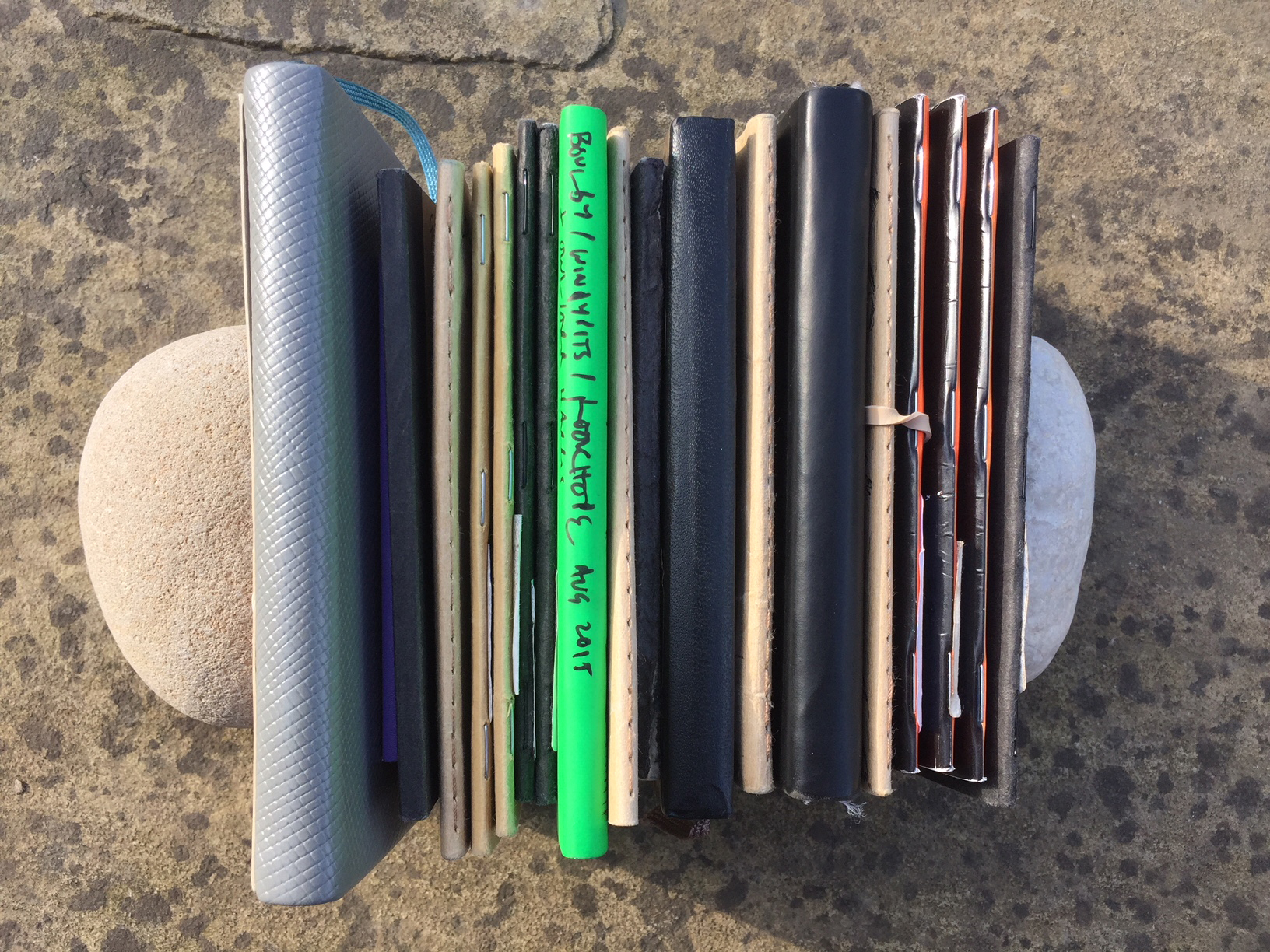
2. I tended to doodle on, title, and sticker up each notebook as I go; a ptarmigan feather for Greenland; mine headworks for the dark matter laboratory in the Boulby potash mine; a tree's root network for Epping Forest and the 'wood wide web'; a diver for the flooded limestone labyrinth under Budapest; a Green Man for Orford Ness; and the helter-skelter tunnel to the end of the world for the Finnish deep nuclear repository known as 'Onkalo', 'The Hiding Place'. Shame that I have all the drawing skills of a fish, really.
3. Diagram of the fortifications and sapping tunnels of the Mantua/Mantova fortress, drawn by a man I met in "The Wolf's Mouth" of the fortress.
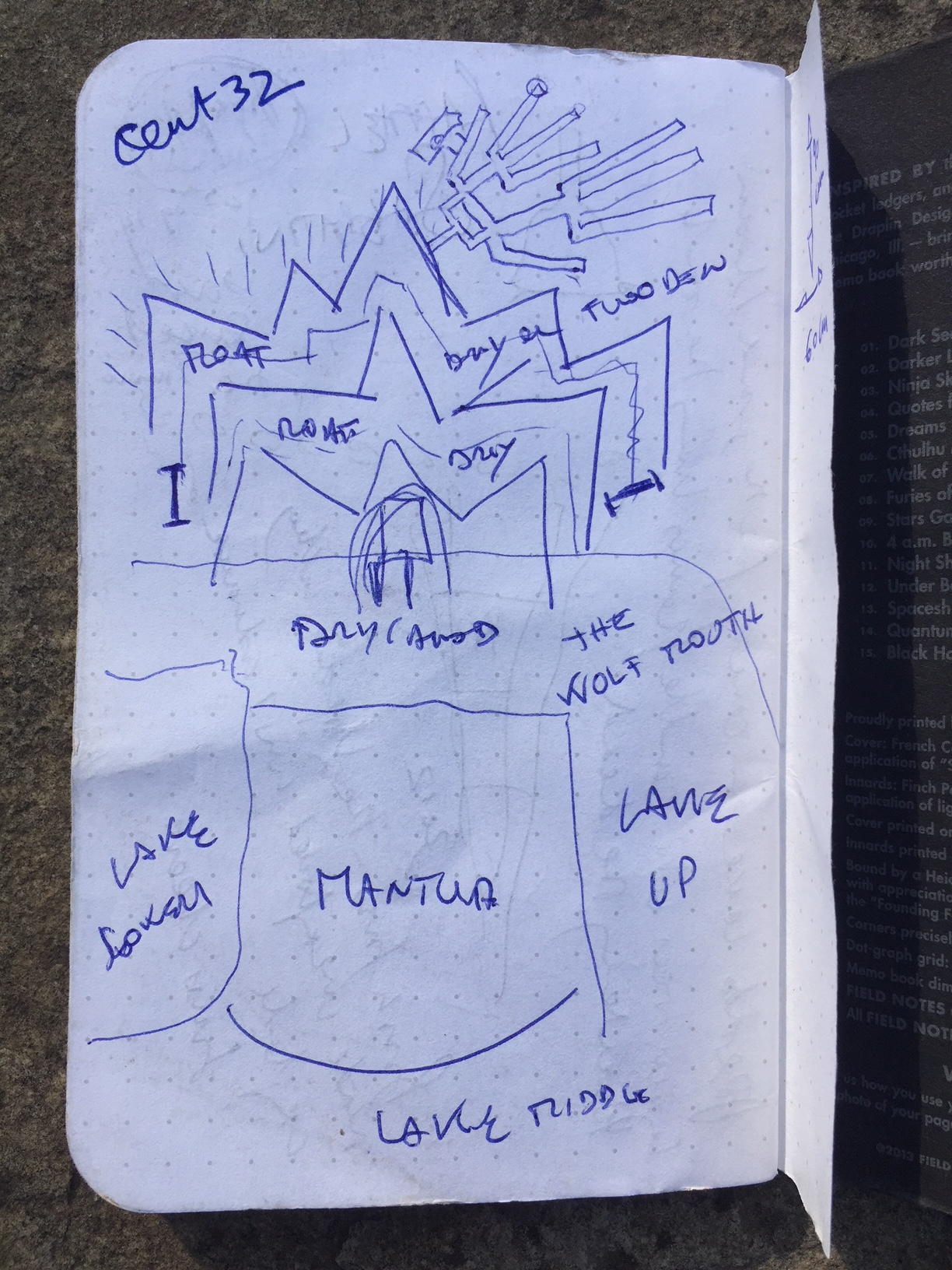
4. Two of the notebooks I filled while mountaineering in Greenland across the summer-autumn of 2016, where I was writing about 'the blue of time' that is archived by ancient glacial ice; at once the memory and the future of global climate.
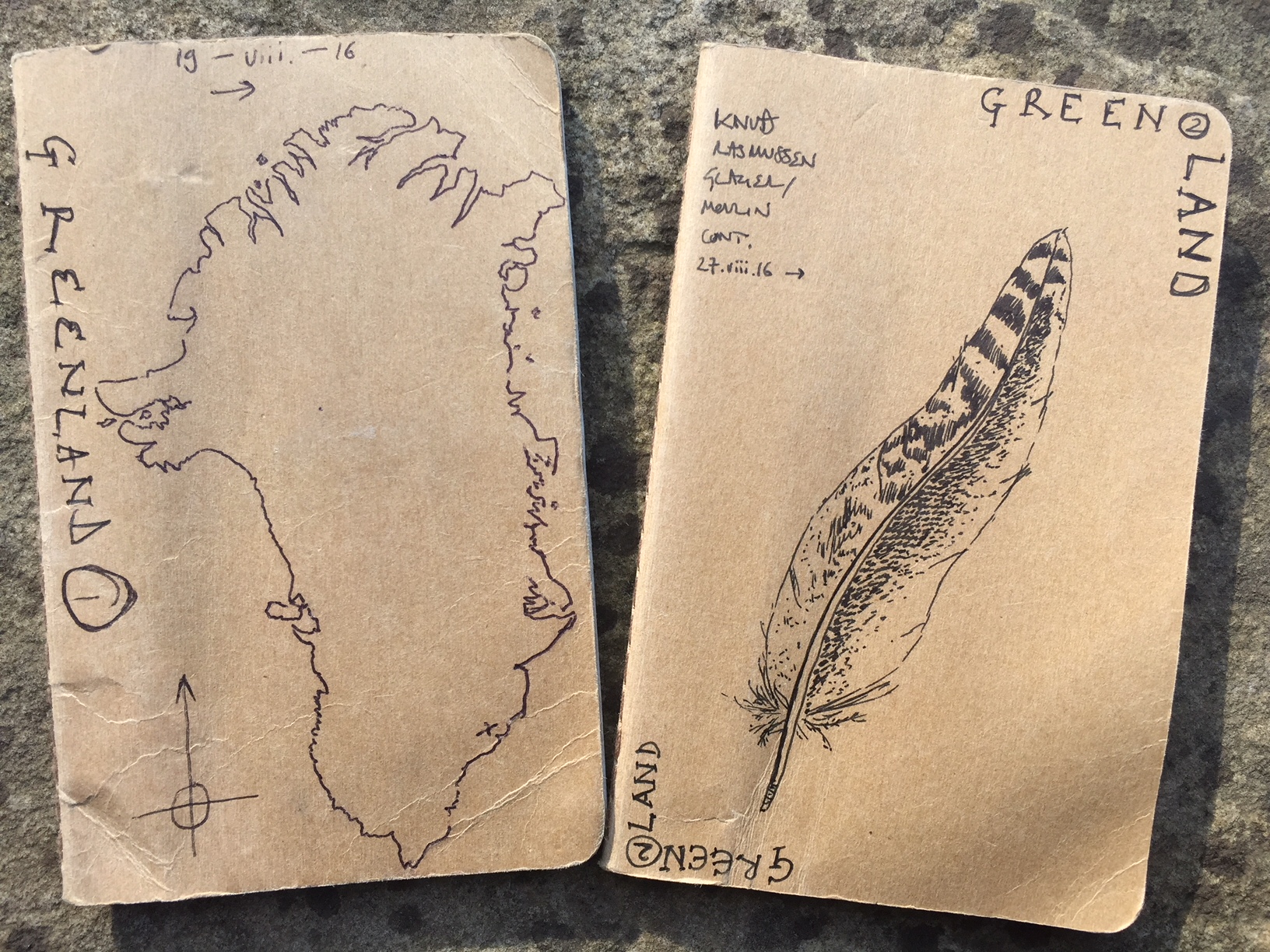
5. Inevitably, my notebooks didn't always stay dry or clean. Here, the water of the Timavo Springs -- where a river that has flowed 1000 feet underground for dozens of miles suddenly surges, green and powerful, to the surface -- made their own contribution to my journal.
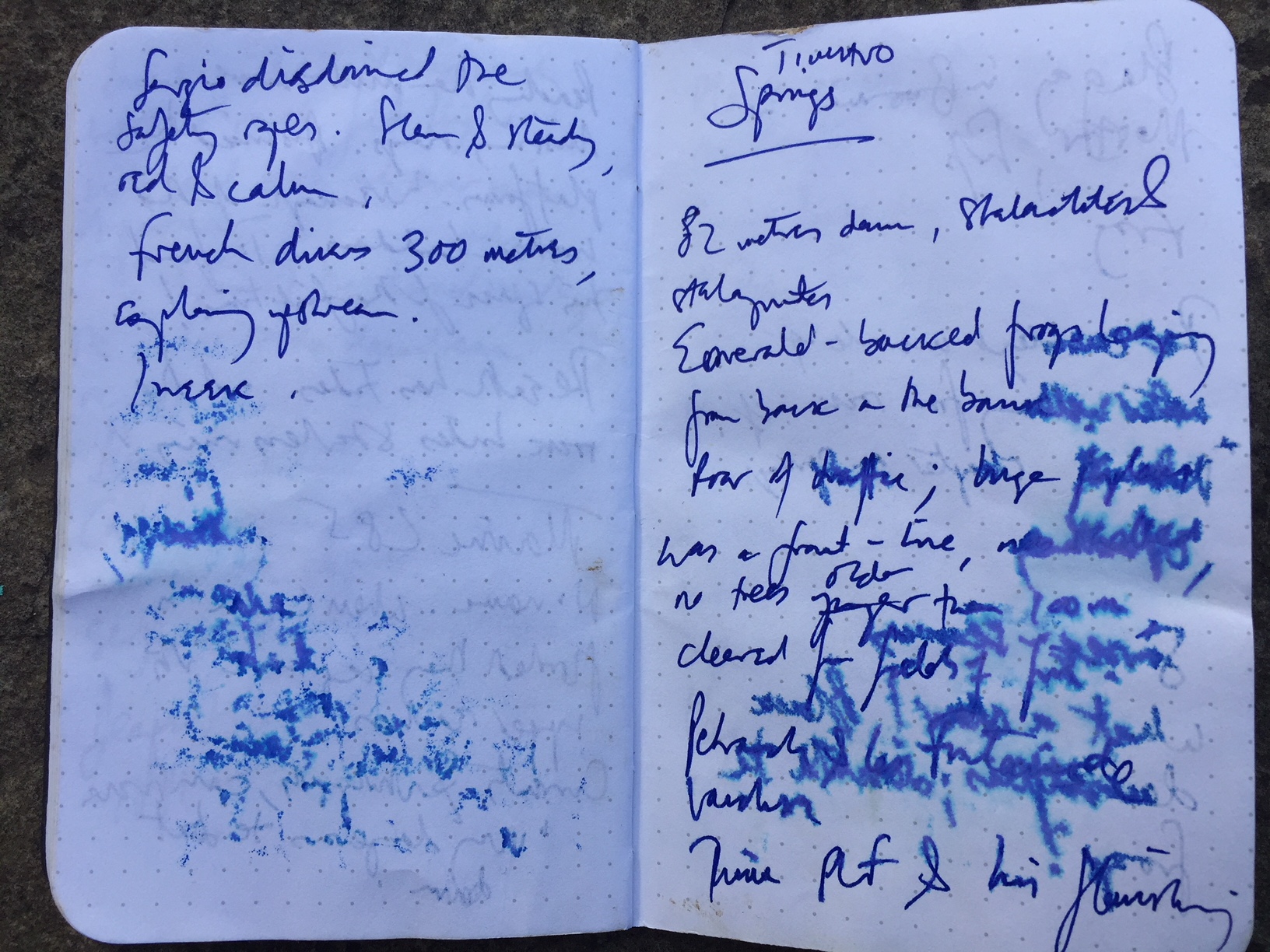
6. The Rorscharch print of hours spent deep inside in an abandoned Welsh slate mine, abseiling into a flooded cavern where we discovered the most extraordinary 'annunciation scene' I've ever witnessed.
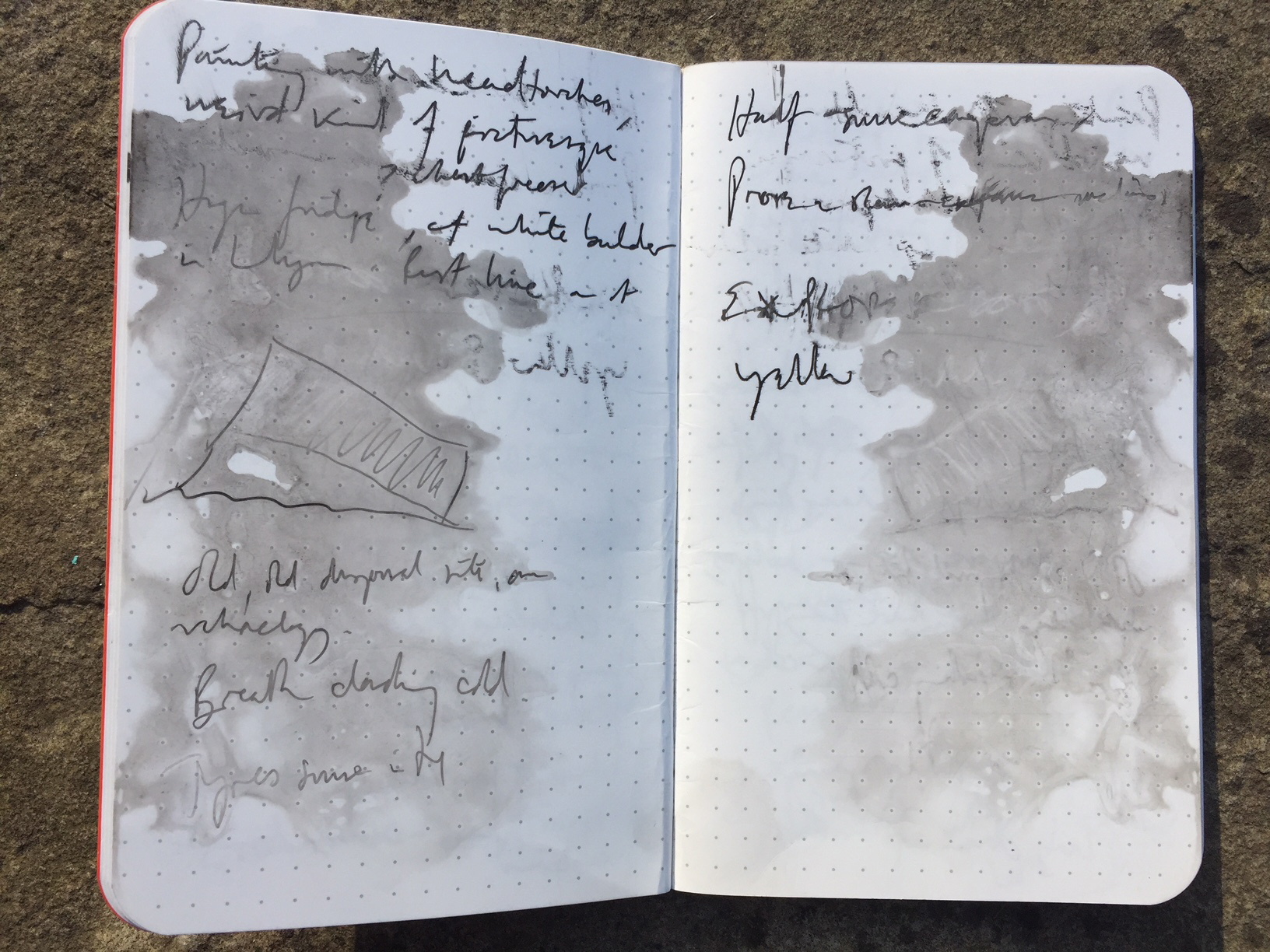
7. The notebooks I like best have little card storage pouches at the back, where you can slip flat finds; here, three ptarmigan feathers found on tundra above the mighty Knud Rasmussen Glacier, and two glittering rhomboids of mica pried from erratic boulders encountered deep in a crevasse labyrinth on the same glacier.
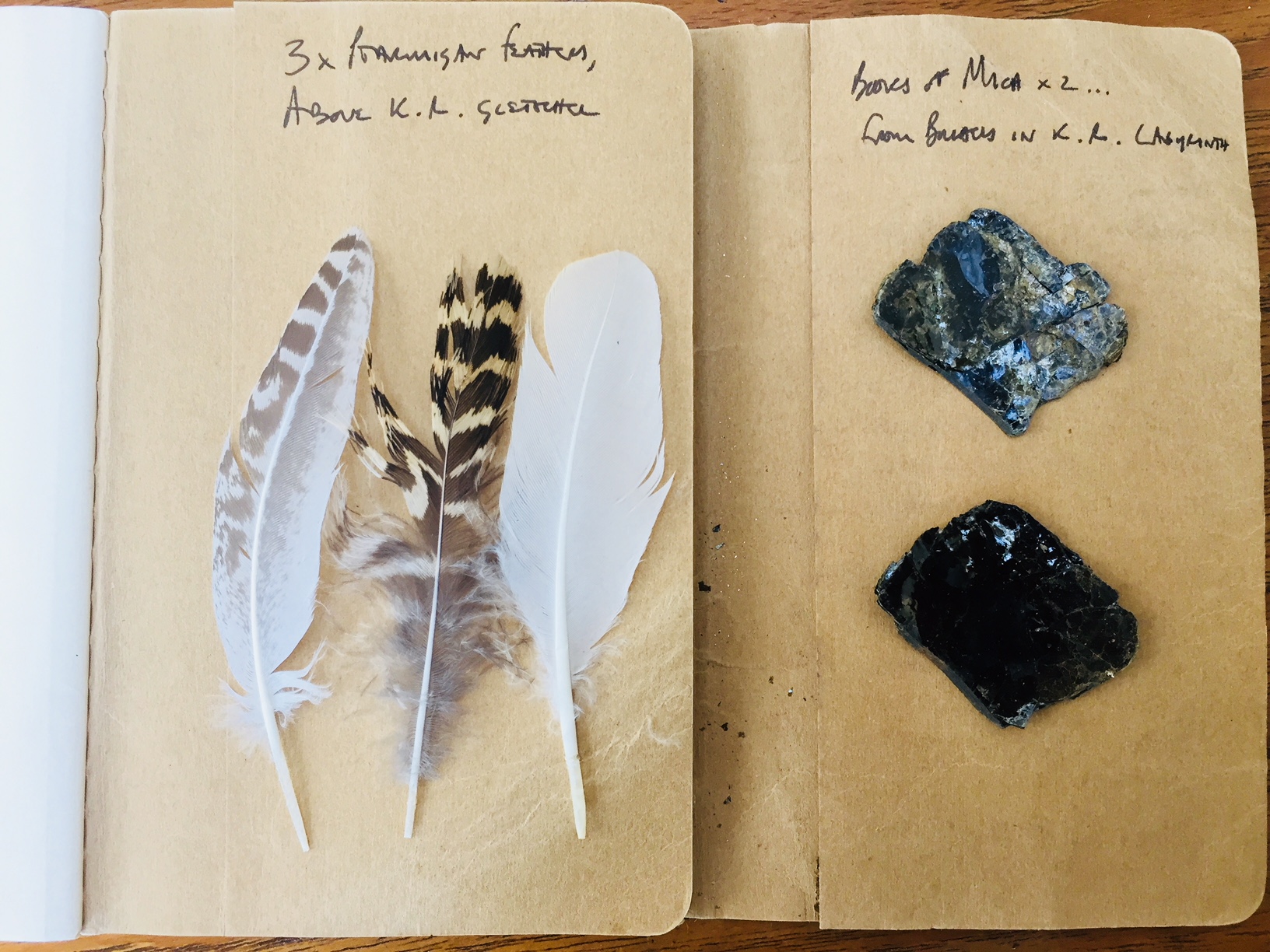
8. The first draft of Underland, watched by the whalebone owl that accompanied me on every journey, given to me by the sculptor Steve Dilworth 'to help me see in the dark'.
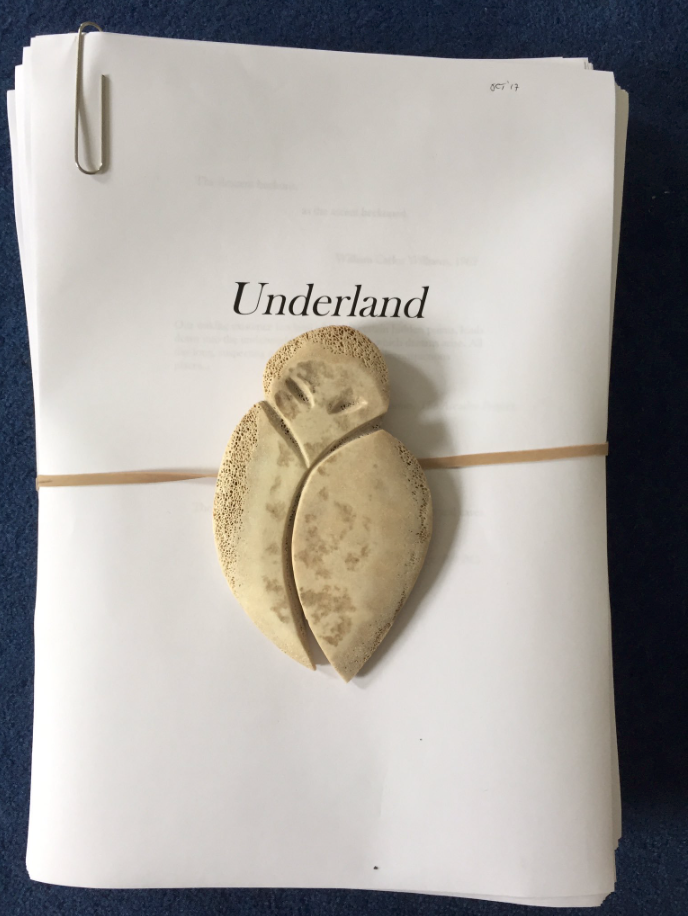
Underland by Robert Macfarlane is out on the 2nd May 2019.